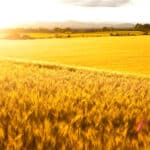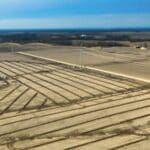Billions of dollars in damages. Lives lost. We are just one-quarter of the way through 2019, and the wake of natural disasters throughout the Midwest has already had an unprecedented impact on producers.
“This recent string of storms has created historic damage and devastation for many farming operations. Our clients and other producers are now contending with property and equipment damage, loss of feed supplies, animal illness from harsh conditions,” says Laura Sands of K·Coe Isom. “Farmers should be getting ready for spring field work. Instead, they are assessing existing damage and trying to determine future flood risk.”
The next month looks difficult. National weather forecasters are predicting a dramatic increase in flooding risk through May throughout much of the Corn Belt and Great Plains. “If you have experienced a loss, it’s important to discuss the implications with your professional advisors. Losses and planting delays may also impact operating and longer term loans,” advises Sands.
K·Coe Isom has compiled some helpful guidance surrounding potential risks stemming from natural disasters.
Read more about the To Do’s and FAQ’s on how to mitigate risk when Bracing for Natural Disasters.
“There are federal resources available to help farmers and livestock producers,” adds Matthew Farrell, Farm Services Program lead for K·Coe Isom. “Working through these issues and understanding eligibility for federal programs is crucial before and after natural disasters.”
The USDA’s Farm Service Agency (FSA) offers these resources for producers after Natural Disasters:
- Livestock Indemnity Program (LIP), Emergency Conservation Program (ECP), Emergency Assistance for Livestock, Honeybees and Farm-Raised Fish Program (ELAP), Disaster Set-Aside Program and Emergency Loan Program are disaster safety net tools available through FSA.
- The Livestock Indemnity Program (LIP) financially assists producers when they suffer a loss of livestock due to adverse weather. Producers must notify their county FSA office of losses within 30 days of when those losses become apparent. A phone call is an acceptable form of notification. Documentation of losses also is critical for LIP. It can include items such as veterinarian certification, other independent third-party certification, rendering receipts, dated photos or video. FSA also will need to know the type and weight of the animals lost.
- The Emergency Conservation Program (ECP) can provide some cost-share assistance to rehabilitate farmland damaged by natural disasters and to help restore fences damaged or lost due to a natural disaster. This program does not trigger automatically, and it is critical that producers, if they think they may want to access this cost-share resource, contact their county FSA office before taking any action to repair damages.
- The Emergency Assistance for Livestock, Honeybees and Farm-Raised Fish Program (ELAP) can, in certain situations, financially assist with livestock feed losses. This may include situations where forage or feedstuffs were destroyed by floodwaters. The program also may be available to help with costs incurred for transporting livestock feed to eligible livestock during an adverse weather event.
- There also may be options for producers through FSA farm loan programs, including the opportunity for existing FSA loan customers to delay a loan payment through the Disaster Set-Aside Program or access the Emergency Loan Program.
To find contact information for state and county FSA offices, visit offices.usda.gov.
For more information on the programs listed above and other resources that could be available, visit http://www.farmers.gov and click on “Recover.”
Should you have questions about the USDA’s disaster relief programs, contact our FSA program lead, Matthew Farrell, at mfarrell@kcoe.com.













